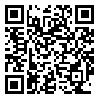2- Dept. of Operative Dentistry, School of Dentistry, Rafsanjan University of Medical Sciences, Rafsanjan, Iran.
3- School of Dentistry, Rafsanjan University of Medical Sciences, Rafsanjan, Iran.

Accepted: 2016/12/27
ePublished: 2017/04/16
Background: The majority of individuals who visit the dentist are anxious. They are usually capable of controlling their anxiety. However, this fear sometimes creates great problems for the patient and dentist such as lack of visiting the dentist for treatment, incorrect diagnosis due to lack of appropriate communication between the patient and dentist, and finally, reduction of oral health level. The purpose of this study was to determine the level of dental fear and anxiety in students of Rafsanjan University of Medical Sciences, Rafsanjan, Iran, and its relationship with oral and dental health status in the 2010-2011 academic year.
Materials and Methods: This descriptive study was conducted using the Dental Anxiety Scale-Revised (DAS-R), Dental fear Scale (DFS), and the decayed, missing, and filled teeth (DMFT) index checklist. The study was performed on 300 students of Rafsanjan University of Medical Sciences, enrolled during 2005-2011. The participants were selected through stratified random sampling based on the population of each department (medicine, nursing and midwifery, dentistry, and paramedicine). The DMFT, DAS-R, and DFS scores along with other gathered data were analyzed using chi-square test in SPSS software.
Results: Among the participants, 82 individuals were medical students, 44 were dentistry students, 53 were nursing and midwifery students, and 121 were paramedical students. In addition, 173 subjects were women and 127 were men. Moreover, 49.3% of students had dental fear and 24.8% had dental anxiety. Among women, 32.4% had dental anxiety and 54.3% had dental fear, while among men, 14.2% had dental anxiety and 40.2% had dental fear.
Conclusions: According to the obtained results, variables such as sex, marital status, field of education, history of dental visit, painful previous treatments, and dental anxiety in the family had an effect on DAS-R and DFS scores. Moreover, there was a significant relationship between DMFT index and level of fear and anxiety; with the increasing of dental fear and anxiety, DMFT also increased.
| Rights and permissions | |
 |
This work is licensed under a Creative Commons Attribution-NonCommercial 4.0 International License. |




